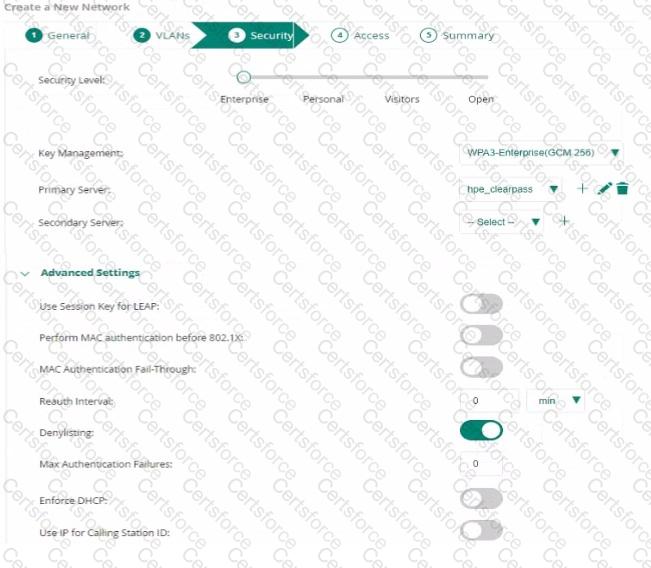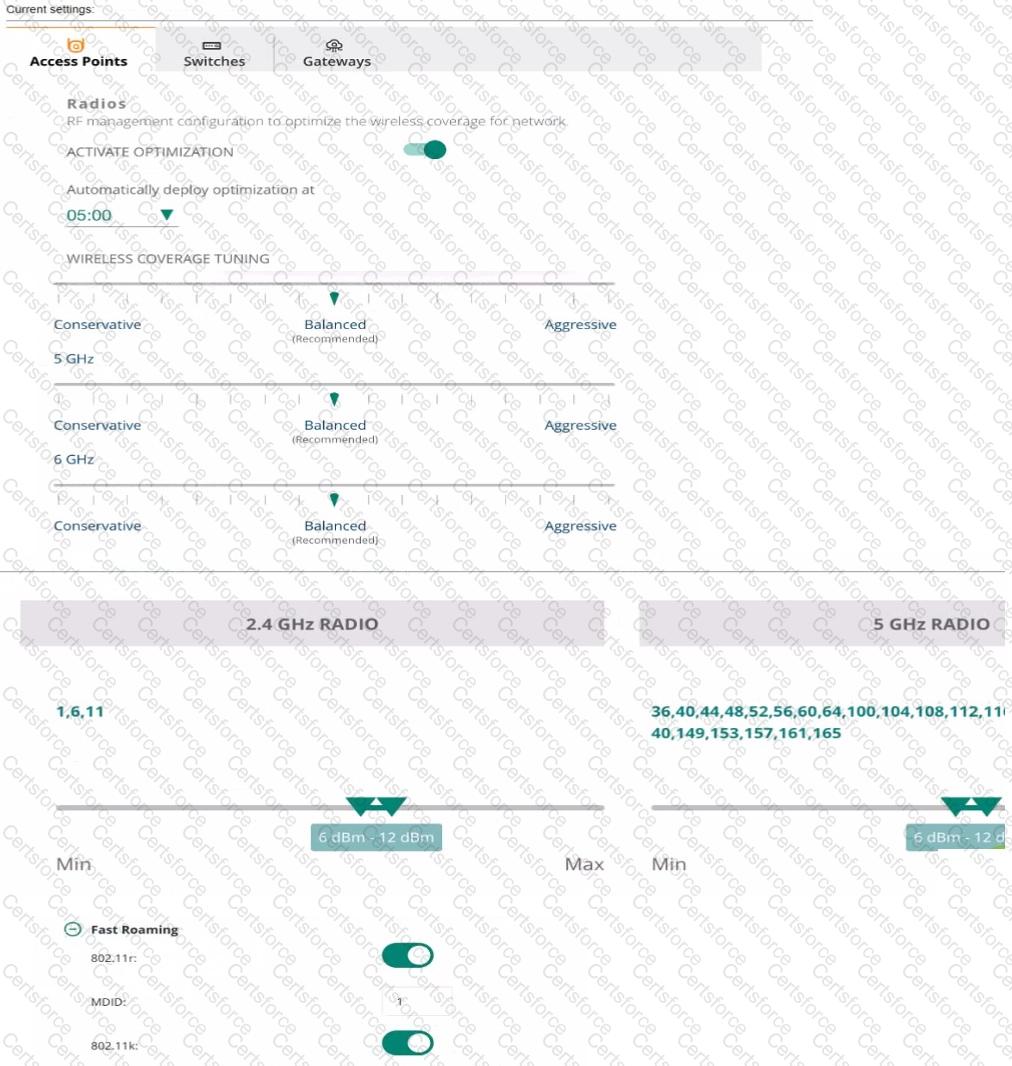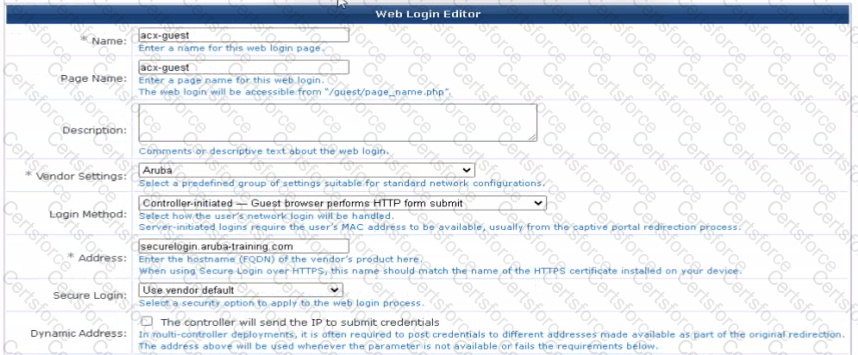You created a new SSID with the security settings shown in the exhibit.

Some, but not all users complain that client devices are unable to connect to this SS1D. What is the reason for this?
The wireless administrator for a college campus is gelling reports of connectivity issues when students are working outdoors.

Reviewing the settings above, watch change is needed to align with best practices?
Exhibit.

Which would explain this issue?
A customer is planning to add loT devices that connect wirelessly to the existing 802.1X SSlD. The customer will use ClearPass to authenticate the IoT devices by MAC address but other devices will still need to authenticate by only 802 1X
Exhibit.

The customer provided the current configuration and reported their non-loT 802. IX devices are no longer able to connect. Which configuration change can be made to fix the issue?
in a WLAN network with a tunneled SSID. you see the following events in HPE Aruba Networking Central:

The customer asks you to investigate log messages What should you tell them?
Exhibit.

A customer is reporting mat connectivity is Tailing for some wireless client Devices. What are your conclusions from the capture? (Select two.)
You are troubleshooting a WLAN deployment with APs and gateways set up with an 802.1X tunneled SSIO. End-users are complaining that they can’t connect to die enterprise SSID. Which possible AP tunnel states could be the cause of the Issue? (Select two.)
Based on best practices if an SSID is configured Tor a primary and secondary gateway cluster with cluster preemption enabled, which will decide if the APs move to the secondary gateway cluster if all of the nodes in the primary gateway cluster are down?
Which data transmission method provides the most efficient use of airtime for VoIP traffic?
You deployed UBT tosecurely tunnel traffic from user desktop PCs connected behind VOIP phones Ail other non-UBT dents are connected to a different network. After the deployment users reported interruptions lo their phone service